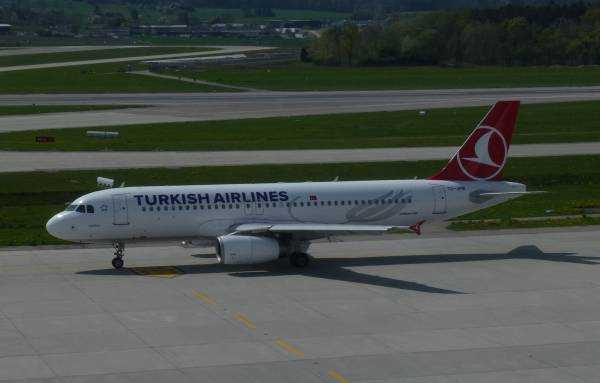European airports reported a 9% increase in passenger traffic in the first half of the year, ACI EUROPE reports in its report, the only air transport report that includes all types of civil aviation passenger flights.

Thus, according to the document, the impressive growth in passenger traffic is caused by several things at once factors. Including the return of passenger traffic from Russia to Turkey, the continuing improvement of economic conditions, and the decline in oil prices.
Against this backdrop, the EU markets and countries outside it faced similar rates of growth in passenger traffic - + 8.7% and + 9.9%, respectively.
IN EU Benelux, together with Cyprus, Malta and Portugal in the south, and Estonia, Lithuania, Poland, the Czech Republic, Hungary, Slovenia and Croatia in the east achieved double-digit growth. In non-EU markets – Albania, Georgia, Moldova, Montenegro and Ukraine – passenger flows grew significantly more actively - by an average of 20%.

Largest airports in Europe (and in particular the five busiest airports on the continent) recorded an increase in passenger traffic of 4.3% in the first half of the year – a marked improvement on the figures for 2016 (+1.6%). Amsterdam-Schiphol led the league in terms of growth (+8.7%), followed by Paris-CDG (+5.2%), Frankfurt (+4.5%). Capacity-constrained London-Heathrow still managed to grow (+3.9%), while Istanbul-Atatürk continued to recover lost ground (-1.1%).
More significant growth concentrated mainly in secondary hubs and mid-sized airports, reflecting evolving competitive dynamics driven largely by low-cost and full-service non-EU carriers.

In this regard the most efficient airports were Keflavik (+39.7%), St. Petersburg (+26%), Kyiv (+29.4%), Antalya (+29.2%), Warsaw (+24.7%), Brussels (+23.4%), Larnaca ( +22.7%), Lisbon (+22.3%), Prague (+21%), Naples (+20.5%), Malta (+20.2%), Bucharest (+20.4%), Porto and Faro (both + 18.5%), Moscow-Sheremetyevo (+ 17.7%), Catania (+ 17.4%), Berlin SFH (+ 17%), Tel Aviv (+17.3%), Birmingham (+16%), Toulouse (+15.2%), Valencia (+15.3%) and Milan-Malpensa (+14.8%).
Respectively, passenger traffic losses The losses were mainly suffered by small airports (with less than 5 million passengers per year).

Olivier Jankovec, Director General of ACI EUROPE, commented on the topic: "For European airports, this is certainly the best result for the first six months for more than 10 years. And this is due to significant growth - since 2012, traffic volumes have increased by almost 30%. This growth has clearly outpaced the most optimistic forecasts."

According to him, the outlook for the European aviation industry is very positive, including the rest of the year.
"Especially in the Eurozone, the growth trajectory is expected to continue, and oil prices will remain in force. Of course, provided there are no new geopolitical cataclysms. Meanwhile, Brexit remains the number one issue for many airport executives, given the ongoing uncertainty surrounding the negotiations. The countdown continues to tick down to March 2019, and if no progress is made in the coming months, we are likely to see negative consequences for the aviation sector as early as next year.”
It is worth noting that Russian airports included in the list of hubs, which reported the largest increase in passenger traffic.
Thus, in the report airports are divided into four groups: I. airports receiving more than 25 million passengers per year; II. airports receiving from 10 to 25 million passengers per year; III. airports receiving from 5 to 10 million passengers per year; IV. airports receiving less than 5 million passengers per year.
Accordingly, the average growth across groups was +6.0%, +12.3%, +10.8% and +9.9%, respectively.

Airports reporting the largest increase in passenger traffic in the first half of the year:
GROUP 1: Moscow SVO (+ 17.7%), Manchester (+ 12.6%), Moscow DME (+ 10.1%), London LGW (+ 9.4%) and Amsterdam (+ 8.7%),
GROUP 2: Antalya (+ 29.2%), St. Petersburg (+ 26.0%) Warsaw WAW (24.7%), Brussels (+ 23.4%) and Lisbon (+ 22.3%)
GROUP 3: Keflavik (+ 39.7%), Kyiv KBP (+ 29.4%), Larnaca (+ 22.7%), Naples (+ 20.5%), Malta (+ 20.2%),
GROUP 4: Bucharest BBBU (+ 488.1%), Nis (+ 366.3%), Kutaisi (+ 92.2%), Craiova (+ 85.8%) and Batumi (73.7%).
Source: trn-news.ru




